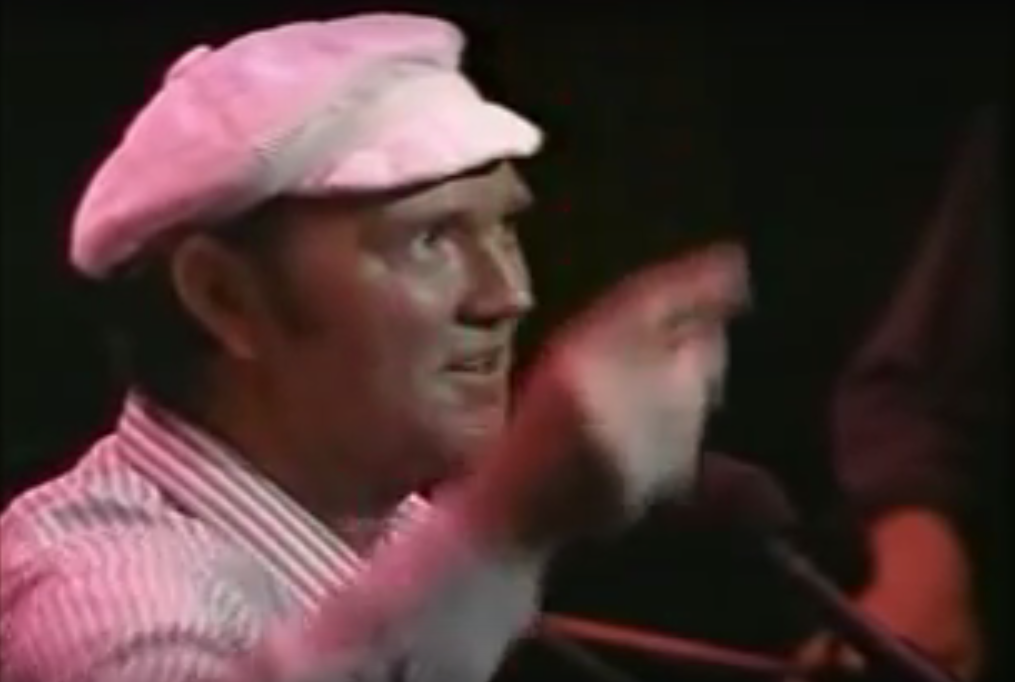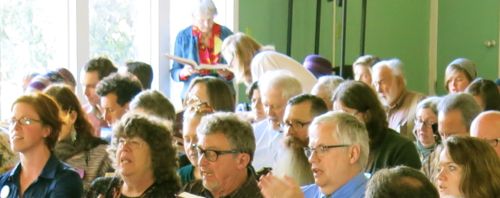Do you hate to sing in worship services? I do.
And it’s not for the reason you might think: it’s not because the hymns or songs suck. Because even a suck-y song can sound great if it’s done well.
No, there other reasons I hate to sing in worship services. Some of those reasons are neatly summarized in a post by Kenny Lamm of the Baptist State Convention of North Carolina.
Here are Lamm’s nine reasons, which I have re-interpreted based on my experiences in Unitarian Universalist congregations:
1. I’m far less likely to sing if I don’t know the song. Yes, I can read music, but unless it’s a pretty straightforward song I’m not going to be able to sight-sing it. And just because a soloist with a microphone sings it doesn’t mean I’m going to be able to sing it the first time through, or even the tenth time through.
2. I’m not going to sing it if the song isn’t really suitable for congregational singing. Those syncopated rhythms that sound so nice when the professional musicians sing or play them? those melodies that go way up into the stratosphere? — most of us out in the congregation don’t have the chops to sing them.
3. I’m not going to be able to sing if the song is pitched to high. The average congregational singer is an untrained baritone or mezzo, which means the comfortable range for them is going to be A up about an octave and a half to E flat. However, if you pitch songs in the lower end of that range, the sopranos and tenors are going to complain; and if you pitch songs in the upper end of that range, the basses (me!) and the altos are going to complain. The best range for most congregations is going to be an octave from C to C. (By the way, Kenny Lamm gets this wrong in the original post; he pitches songs for baritones and mezzos, and forgets about the rest of us.)
4. When I can’t hear the people around me singing, it takes a lot of courage to actually sing, so I’ll only sing songs that I know well (and even then, I’ll be more tentative). That means if the accompanist is too loud, and drowns us out, I’m not going to be able to hear the people around me. And if the ceiling is too high, so all our voices get lost up there, I’m not going to be able to hear the people around me. This is one of the reasons I don’t like singing in the Main Hall of the UU Church of Palo Alto: the ceiling of the Main Hall is so high, it’s hard to hear anyone singing.
5. Musicians and worship leaders who don’t understand the delicate art of accompaniment intimidate me, and I won’t sing. That fabulous soloist or worship leader with the incredible voice? — I’m not going to humiliate myself by trying to compete with them. The “accompanist” who obviously isn’t listening to us and doesn’t know that we’re struggling? — I’ll just listen to them and not bother to sing along. I like a g good accompanist who listens to the congregation and supports us when we sing, but there are very few good accompanists out there. (We’re lucky at the UU Church of Palo Alto that we have two professional musicians, Veronika Agranov-Dafoe and Bruce Olstad, who actually understand how to be an accompanist, and when one of them is playing I’m more likely to sing.)
6. If there’s doubt in my mind whether the worship leaders want me to sing, then I’m less likely to sing. That really awesome worship service with the high production values? I know they don’t really want me to sing, because my voice will just lower the quality. That worship leader who mumbles the name of the hymn and shows no joy that we’re going to be singing it? I suspect they don’t really care about the hymn, they just had to stick something in there. In either case, I’m less likely to sing.
7. Professional musicians like to keep throwing exciting new songs at congregations. Ministers like to choose hymns because the lyrics fit in with the sermon topic. Both these ways of choosing hymns fail to take into account a fundamental aspect of human nature: we like to sing the same songs over and over again. In one congregation, a wise elder told me how to chose hymns: she gave me a list of fifty hymns that she knew the congregation loved to sing, and I chose from that list whether the hymns fit the service or not. Once a year, we would drop two or three under-utilized hymns and add two or three new hymns — and each of those new hymns we’d sing once a week until the congregation knew it. That congregation sang pretty well.
8. If the soloist or accompanist adds all kinds of runs and trills and arpeggios and whadda-ya-call’ems — and if no one is actually singing the melody along with me — I’m likely to give up. And it’s while it’s great to have those high sopranos singing the melody, those of us with voices an octave down would appreciate it if someone could sing the melody in our range, too.
9. Finally, to state the obvious, if the worship leader isn’t paying attention to make sure I’m following along, don’t expect me to sing. For example, when the worship leader tells me how much they love this song, and they sing at the top of their lungs but they don’t help me sing it well and, worse yet, they’re not even aware that I’m struggling out here in the pews — not only am I not going to sing, but I might just ignore the sermon as well.
That’s my take on Kenny Lamm’s original post (and thanks to Carol for pointing the post out to me!).
Now: what do you think? Why don’t you sing in worship services?


